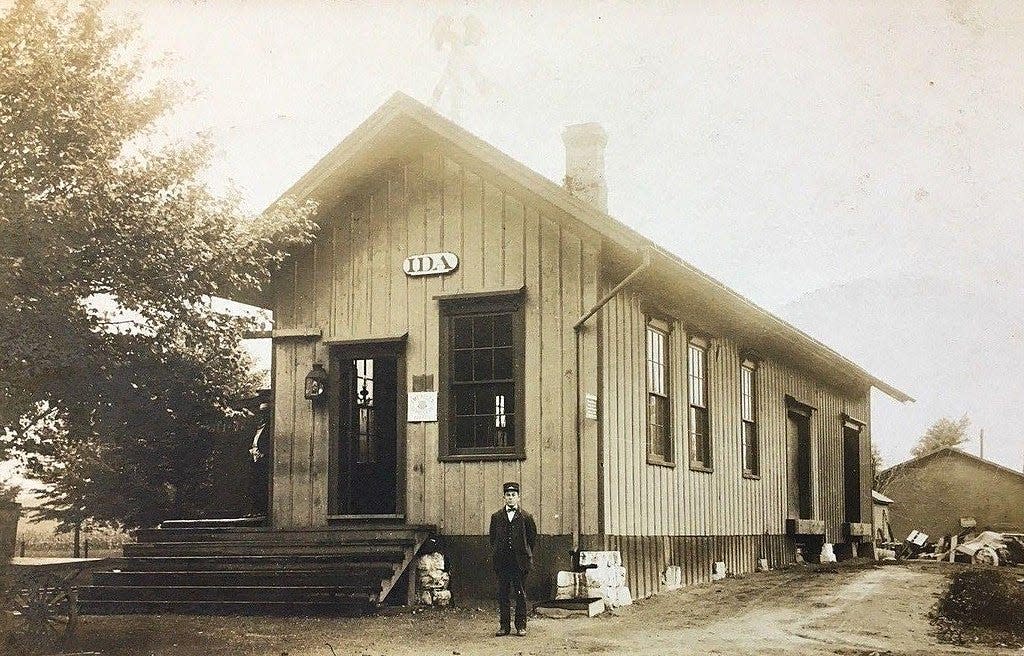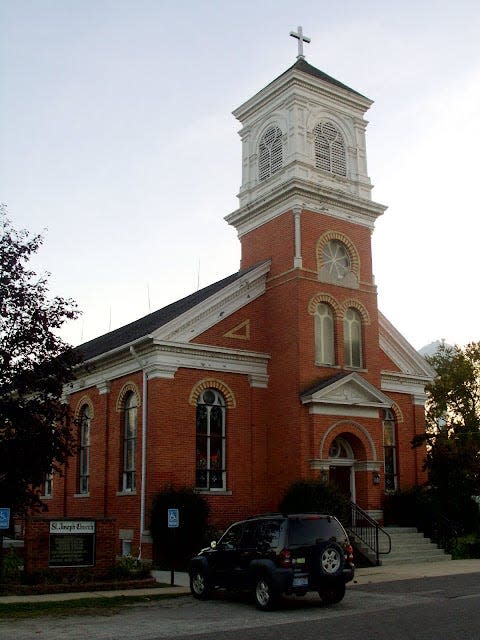Monroe County History: Ida area grew as key crossroads

When one looks at transportation history in Monroe County, the area of Ida (including Ida Township and the unincorporated communities of Ida, Lulu, Yargerville, and Ida Center) is a significant crossroads and point for travel west to Chicago. The Ida area is approximately 12 miles from the Ohio border and is bisected by Lewis Avenue as a main artery with U.S. 23 running to the east, M-50 running to the north and LaSalle/Interstate 75 to the southeast.
In Bulkley’s “History of Monroe County, Michigan,” the geographic boundaries are as follows: “This township was organized in 1837 by taking a portion of Raisinville, Dundee, and Summerfield, giving in geographical area a perfectly square form of thirty-six sections, there being, besides this, but six townships so arranged. It is watered by small streams flowing into and forming Otter Creek, which empites into Lake Erie in La Salle Township.”
Ida was named for local civil leader Ida M. Taylor. It was the construction of a stagecoach stop in the Ida area in the early 1800s that started its growth. Positioned strategically between Monroe and Adrian, the community received its first business when, in 1825, the Wayside Inn opened and served travelers along the muddy, treacherous roadway that once consisted of very poor Indian trails. All of the first settlers in the area were farmers, who even earned extra money by helping travelers who became stuck in the muddy trails. George Willard, Chauncy Owen, Joseph Gregory, Anthony Briggs, Mathew Fredenburg, Alonzo Durrin, Wm. Richardson, Josiah Kellogg, David Brainard, John Campbell and John W. Talbot were among the first farmers to produce in the Ida area.
The Michigan Southern Railroad first constructed railway lines through the area by 1839, which led to further growth of the Ida area’s communities. It would also receive a train depot, which successfully operated as part of the Lake Shore and Michigan Southern Railroad and, later, as a depot for the New York Central Railroad until it was closed in 1959. Many German settlers were drawn to the area, which also offered great deer hunting and some stone mining opportunities, as Bulkley described, “Stone quarries exist at several points from which building stone and lime are obtained, in sections 19, 20, and 21 there is, according to the geological department surveys of 1900, a deepening of the rock, elsewhere quite thin; the soil is somewhat sandy, and there are belts of loam which pursue an eccentric course in a northeast and southwest direction; in some cases, the soil vanishes entirely, exposing the bedrock. In the deep well at Ida, forty-five feet of sand rock was penetrated. The greater breadth of the belt of Sand Rock at Ida in the eastern portion is not due to increased thickness, but rather to the positions of the beds.”

As German immigrants settled in Ida-area communities, they brought with them their religious affiliations, particularly the Catholic faith. When Ida was platted in 1868, a location near the center of the community was acquired as a location for the Catholic church. In 1869, the St. Joseph parish was established. In 1904, the current brick structure was constructed. Many art nouveau-style architectural features were incorporated into the design, including a depiction of Jesus’ Last Supper above the high altar. There are also inlays/carvings of the Holy Family positioned nearby. Statues of the Sacred Heart of Jesus and St. Thérèse flank the choir loft area at the rear of the church.
St. Joseph Cemetery contains gravesites from the 1870s. St. Joseph Church merged with Dundee’s St. Irene (founded in 1964) to form the St. Gabriel Parish Cluster in 2013.
Tom Adamich is president of Visiting Librarian Service, a firm he has operated since 1993. He also is project archivist for the Greening Nursery Co. and Family Archives.
This article originally appeared on The Daily Telegram: Monroe County History: Ida area grew as key crossroads

